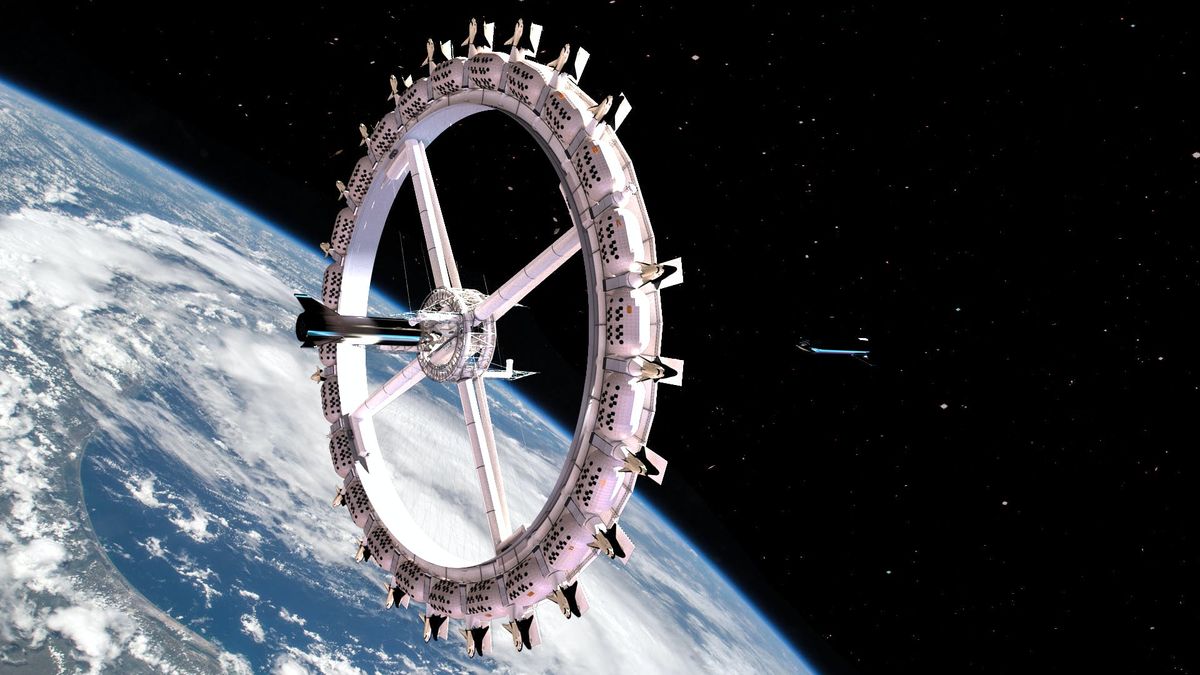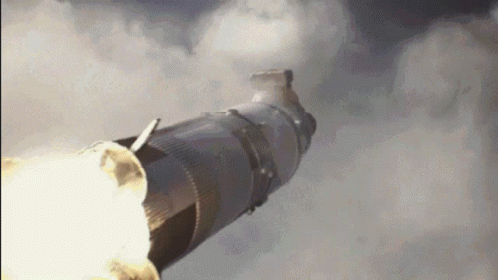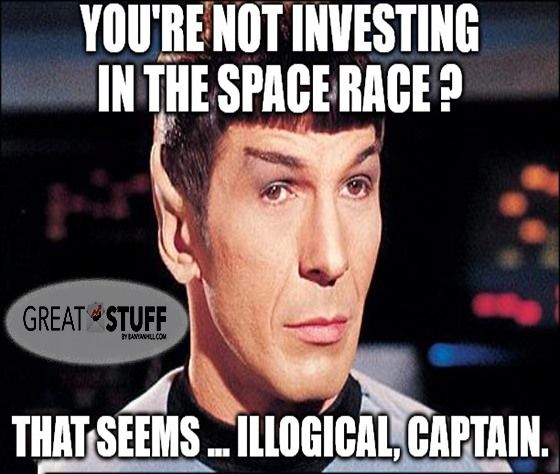The LEO R&D Strategy, Part 2: National Economic Spacepower

What will the next 10 years look like in near-Earth space? What role does the United States see for commercial activities there? When do we get flying cars (jk)? The United States National Science and Technology Council (NSTC) have spent the second year of the Biden Administration busily drafting strategy to support Low-Earth Orbit(LEO), In-space Service, Assembly, and Manufacture (ISAM), and Cislunar Space (a.k.a. beyond GEO - xGEO). This article will examine the weave and weft of the National LEO Research & Development Strategy and attempt to pull threads on and understand its impacts on national economic spacepower.
The National Science and Technology Council's National Low Earth Orbit (LEO) Research and Development (R&D) Strategy meaningfully contributes to improved economic spacepower. The strategy articulates a map towards commercial LEO destinations (i.e., commercial space stations), space infrastructure buildouts, and workforce training. Combined, inclusion of the United States' national workforce, infrastructure, and commercially-driven free markets promise to help the space economy transition from dependence on government budgets.
To unfold this paper spaceplane, we will 1) give a brief review of the United States National LEO R&D Strategy, 2) identify policy threads related to economic spacepower, and 3) attempt to understand their impact.
Yeet!
1) Economic Spacepower? A LEO R&D Strategy?
Economic Spacepower
A nation's economic spacepower is its ability to shape and influence events in space using economic instruments. Those instruments do not necessarily reside in space themselves - though many do or will. Economic spacepower is one instrument of national power. There are several others, including diplomatic, informational, and military, to name a few.
Economic capacity and instruments have long been tools in geopolitics and statecraft. As the second space race continues to grow in perceptions, scope, and scale, we might wonder what and how instruments of national power are being used to influence this 'race.'

The National LEO R&D Strategy
Under the direction of the White House, the NSTC have drafted several space-related strategy documents. Their views and plans are absolutely relevant to the United States' position and influence on-orbit in years to come.
As with other national strategy documents, this plan sports several objectives:
"1. Advance groundbreaking science & technology [...].
2. Strengthen U.S. Government collaboration and partnerships [...].
3. Promote market opportunities, innovation, and sustainability [...].
4. Expand international cooperation [...].
5. Stimulate science, technology, engineering, and mathematics (STEM) education and workforce development [...]."
(pg. 5, National LEO R&D Strategy)
In another article I discussed the strategy's impacts on diplomatic spacepower. For this article, objectives 1, 3, and 5 most strongly impact economic spacepower. Let's take a look.
2) Economic Threads
The United States Government (USG) is eager to develop space commerce and infrastructure that is founded upon free market principles and peaceful use of space coupled with strong mechanisms to protect intellectual capital.
"Future technological progress in space will be propelled by the U.S. Government empowering the free market, while working with allies and partners to protect IP." (pg. 11, National LEO R&D Strategy)
and
"[T]he U.S. Government will continue to support the exploration and use of space for peaceful purposes, including the use of LEO for R&D." (pg. 10, National LEO R&D Strategy)
It also appears to be a launching point (no pun intended) for a broad array of future economic activities in space.
"This strategy prioritizes the use of LEO for the benefits of humanity. It will also enable a sustained human presence in space." (pg. 5, National LEO R&D Strategy)
Further:
"An emphasis on reusability and more diverse market demand promises to lower launch costs and barriers to entry for users and ultimately move us closer to making living and working in space commonplace." (pg. 7, National LEO R&D Strategy)
Let's examine specific strategic directives.
Commercial LEO Destinations
A cornerstone of American economic spacepower in the coming years will be commercially operated space stations. That's right. The USG wants to transition from the International Space Station (ISS) to commercial LEO destinations.
"[T]he U.S. Government needs to plan strategically for the post-ISS world especially for the employment of commercial state-of-the-art autonomously-operated and human-occupied outposts." (pg. 5, National LEO R&D Strategy)
Critically, these destinations "[...] will be privately-owned and operated facilities in space with the capacity for conducting research." (pg. 6, National LEO R&D Strategy). The strategy goes on further to say:
"Some platforms may be designed for specific activities, like in-space production, while others may accommodate human activities, including R&D, STEM outreach, tourism, and other commercial activities." (pg. 7, National LEO R&D Strategy)
Lastly, special USG efforts will be made to "[...] work with commercial providers to reduce technical and economic barriers to commercial platforms, while maintaining safety." (pg. 11, National LEO R&D Strategy).
Speaking of safety, let's move on the space infrastructure.
Space Infrastructure
When the national LEO strategy discusses space infrastructure, it means space situational awareness (SSA), "[...], ground systems, satellite systems, potentially in-space assembly, and reusable vehicles." (pg. 7, National LEO R&D Strategy). The vision of how this would work is
"For example, successful commercial LEO SSA [pilot programs] could be enhanced by infrastructure to support satellite owners and operators, and SSA providers." (pg. 11, National LEO R&D Strategy)
Beyond traditional infrastructure, the USG also recognizes a need to organize a public-private partnership between government, academia, and industry. The strategy calls new organization (to be led and formed by NASA) the LEO National Laboratory.
"A future LEO National Laboratory would encompass orbital and suborbital platforms as well as existing and new terrestrial facilities, including DOE’s national laboratories, NASA’s space flight and research centers, DOD’s service research laboratories, U.S. universities, and private-sector partners." (pg. 9, National LEO R&D Strategy)
With all of these commercial and infrastructure activities, the USG would do well to support continued market and space sustainability.
Market and Space Sustainability
One flavor of stability the USG is eager to maintain is market stability. In other words, a vibrant and active market economy in LEO that does not depend completely upon federal expenditures and budgets.
"The U.S. Government will continue to strengthen cooperation with the commercial sector in order to understand and implement solutions that support commercial LEO access providers in building a scalable, revenue-based economy on orbit." (pg. 10, National LEO R&D Strategy)
To kickstart this process, a first step will be to:
"[...] provide competitive opportunities for government grants to support commercial space startup companies to establish the feasibility of promising scientific and technological capabilities and applications." (pg. 11, National LEO R&D Strategy)
This rather bland-sounding statement suggests that government-commercial partnerships similar to the Commercial Orbital Transportation Services (COTS) launch-vehicle development program pioneered and funded by NASA in 2006. We should export more such vehicles and agreements.

Space sustainability, i.e., efforts to ensure continued access to and use of space, is also discussed. Focusing on research & development, the torch is clearly in the Office of Space Commerce's hands.
"To make strides in standards for future space situational awareness (SSA) technologies and in cybersecurity for satellites, the [National LEO] Laboratory would continue to collaborate on cutting-edge research with [Department of Commerce]." (pg. 9, National LEO R&D Strategy)
There are a variety of other endeavors related to space sustainability that firmly support norms of behavior and diplomatic spacepower (discussed in another article).
Workforce Development
Turning our attention to human capital, perhaps the most important element of economic spacepower, we see a variety of efforts at all levels of education - K-16 (vice K-12) as well as post-graduate.
Integrating space-focused and -adjacent experiential learning into primary and secondary education is a principal objective. This will be done through professional support and material for U.S. (and international) educators.
"The U.S. Government will provide professional support for educators so they may increase their up-to-date content knowledge and encourage student involvement in ongoing programs through experiential learning." (pg. 12, National LEO R&D Strategy)
On initiative that I am thrilled to hear is a renewed focus on two-year learning institutions and trade schools. Growing up in a blue-collar family, this one hits home!
"The U.S. Government will engage in building capacity in post-secondary two-year learning institutions and trade schools for these often-underserved learning communities." (pg. 13, National LEO R&D Strategy)
Finally, no workforce development plan would be complete without elements of university education.
"The U.S. Government will continue to support research initiatives that build capacity in U.S. colleges and universities to include opportunities such as equipment grants; collaborative research grants to connect across institutions, government research efforts, and industry; student and postdoctoral fellowships; collaborative research centers; Reserve Officer Training School space programs; and opportunities for visiting scientists." (pg. 13, National LEO R&D Strategy)

Whew. Now that we've pulled most of the threads together, let's see what kind of an economic spacepower tapestry has been woven.
3) Impact on Economic Spacepower
Combined, efforts in commercial LEO destinations, space infrastructure, market and space sustainability, and workforce development will continue to build a strong foundation for economic spacepower in the form of a bustling LEO space economy fueled by a talented workforce.
Surely, the likes of Orbital Assembly Corporation with its plans for 2025 launch of Voyager Station and Pioneer Station (in collaboration with SpaceX) should be excited. It appears that commercial space tourism will no longer be confined to suborbital flights.
More important than space tourism (at least, from an economic spacepower perspective) is that the USG intends to build contractual and market frameworks to purchase commercially available Space Assets as a Service (SAaaS? SA3S?). I don't think anyone knows exactly where this will lead the United States and free markets, but I'm excited to find out.
The strategy correctly identifies funding and regulatory stability as central to building a thriving, sustainable, and scalable LEO commercial sector. Strategic investments in key areas through instruments similar to NASA's COTS program will be critical.
The inclusion of necessary space infrastructure, including the NASA-led endeavor to stand up a National LEO Laboratory, will ensure that LEO has the space-equivalent of terrestrial roads, cell towers, gas stations, and rest stops. Don't forget traffic signals and signs! Traffic management is part of infrastructure, too.
Finally, much like the Cislunar S&T Strategy impacts on economic spacepower, an enduring focus on workforce development is necessary. I've written about demographic challenges in the space workforce before; it's clear that the USG recognizes this problem and has specific plans to address this challenge.
University students are already quite keen to study astronautical engineering. I very much approve of the focus on inculcating 'space' as a foundational element of the national character. Increased involvement in K-16 education and the introduction of space-related skillsets in trade schools is a welcome addition.
As recognized by A. T. Mahan in 1890, and echoed by the United States Space Force:
"[...Regarding] population, it is not only the grand total, but the number following the sea, or at least readily available for employment on ship-board and for the creation of naval material, that must be counted." (pp. 44, 45, The Influence of Sea Power Upon History)
and
"Our greatest assets are the men and women - the space professionals [...]" (pg. 46, Spacepower - Doctrine for Space Forces)
Let's review.
Summary
Three of five objectives identified in the National LEO R&D Strategy substantially impact economic spacepower. They are: 1) Advancing groundbreaking science & technology, 3) Promoting market opportunities, innovation, and sustainability, and 5) stimulating STEM education and workforce development. Their specific impacts are:
- Commercial LEO Destinations and government demand (plus contract vehicles) to kickstart scalable support for established and new market entrants. A transition from government-run to commercial space stations will have meaningful follow-on effects.
- Space Infrastructure Improvement and support will lower entry barriers for new market participants, and provide necessary support for commercial and national endeavors. Improved SSA will further benefit diplomatic efforts in space sustainability.
- Training STEM Workforce at all Levels will help ensure that the United States population is 'space conscious' and possesses skillsets that benefit commercial and national space endeavors.
Subscribe to the Newsletter
If you enjoy this content, show your support by subscribing to the free weekly newsletter, which includes the weekly articles as well as additional comments from me. There are great reasons to do so, and subscriptions give me motivation to continue writing these articles! Subscribe today!


